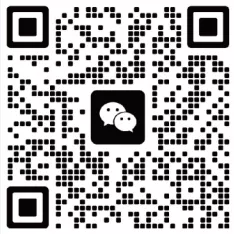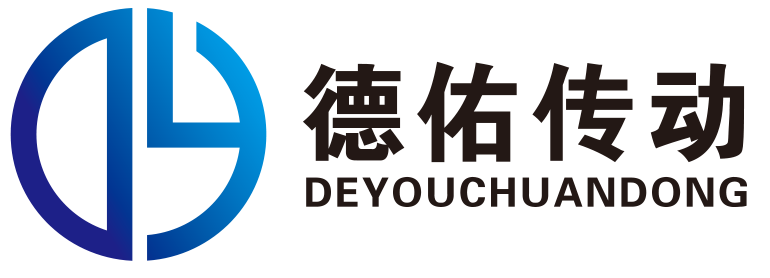Analysis of the function of tractor and automobile steering drive axles through practical cases
Release time:
2025-02-28
The main function of the tractor and automobile walking system is to transform the driving torque transmitted from the engine to the driving wheels into the propulsion force required for the tractor and automobile to work;
The main function of the tractor's automotive travel system is to convert the driving torque transmitted from the engine to the driving wheels into the propulsion force required for the tractor's operation; and to convert the rotary motion of the driving wheels into the movement of the tractor on the ground. In addition, the travel system is also used to support the weight of the tractor and reduce impact and vibration. The steering drive axle is an important part of the travel system. This article analyzes the function of the tractor's steering drive axle through two practical cases.
The steering drive axle is used on four-wheel drive tractors and off-road vehicles because it can both drive and steer, hence the name steering drive axle. It has the same main drive unit as a general drive axle. Because its wheels need to deflect around the kingpin when steering, the half-shafts must be divided into inner and outer sections and connected by universal joints.
I. Steering drive axle of Liberation CA-30A 6x6 vehicle
The steering drive axle of the Liberation CA-30A 6x6 vehicle consists of an inner half-shaft, a constant-velocity universal joint, adjusting shims, a kingpin, an axle cap, a steering knuckle housing, a steering knuckle journal, a drive shaft, a flange disc, an adjusting nut, a lock washer, a lock nut, a wheel hub, an oil seal, a steering knuckle spherical seat, a steering knuckle arm, a half-shaft sleeve, a thrust washer, and a bronze bushing, etc.
During operation, the inner half-shaft is connected to the drive shaft via a ball-type constant-velocity universal joint. When the front axle is driven, the torque is transmitted from the differential, inner half-shaft, constant-velocity universal joint, drive shaft, and flange disc to the wheel hub.
In order for the front wheels to steer, in addition to the inner and outer half-shafts being connected by a constant-velocity universal joint, the steering knuckle is mounted on a steering knuckle spherical seat with a kingpin via two tapered roller bearings. The upper and lower sections of the kingpin axis must be in a straight line and pass through the center of the universal joint to ensure that the wheel rotation and deflection do not interfere with each other. The two bearings are pressed together by the bearing cap, which contains adjusting shims that can adjust the bearing preload. To ensure that the center of the universal joint is on the axis of the spherical seat, the thickness of the upper and lower adjusting shims should be the same. A wheel hub is installed on the outside of the steering knuckle journal, and the wheel hub bearing is secured by an adjusting nut, a lock washer, and a lock nut. A bronze bushing is press-fitted between the steering knuckle journal and the drive shaft to support the outer half-shaft and drive shaft. Thrust washers are installed on the end faces of the steering spherical seat and the steering knuckle journal inner hole to prevent axial movement. When the steering knuckle is pushed by the steering knuckle arm, the steering knuckle rotates around the kingpin, causing the front wheels to steer.
II. John Deere 4440 Tractor's Hydrostatic Front Wheel Drive System
The John Deere 4440 tractor's hydrostatic front wheel drive system consists of a planetary gear set, a brake piston oil passage, an upper main oil passage, an axial piston hydraulic motor, a lower main oil passage, and a brake piston. Each wheel is equipped with an axial quantitative hydraulic motor. Through two sets of planetary gear mechanisms with a speed ratio of 40:1, the power is transmitted to the front wheels. There is no need for a mechanical differential between the two wheels, thus achieving a higher front axle ground clearance. When the high-pressure oil flow into the motor inlet changes, the rotation direction of the motor changes. When the oil flows in from the upper main oil passage and out from the lower oil passage, the tractor moves forward. When the oil flows in from the lower oil passage, the tractor reverses. High-pressure oil can first pass through the left-wheel motor and then through the right-wheel motor to form a series oil circuit and obtain low torque. It can also pass through both motors simultaneously to form a parallel oil circuit and obtain high torque. When the transmission is under load shifting, there are a total of (8+4) gears. Torque shifting is only used in forward and reverse gears 1-2-3-4. Low torque is used in forward gears 1-2-3-4-5-6 and reverse gears 1-2-3-4. The series and parallel connections of the oil flow are controlled by a torque converter valve, and the change of oil flow to the motor inlet and outlet is controlled by a directional valve. The positions of the torque converter valve and the directional valve are controlled by three pilot valves (forward, reverse, torque converter). The positions of these three pilot valves are controlled by three sets of electromagnets. The current from the battery to the three sets of electromagnets is controlled by an operating switch (three-position button) installed in the cab. It has three positions: high torque, low torque, and no drive. The circuit between the battery and the operating switch passes through the clutch pedal switch. When the clutch pedal is pressed, the current is cut off. When the clutch pedal is not pressed, the current passes through the operating switch. A speed switch and a direction switch are also required between the operating switch and the three electromagnets. When operating the shift lever, these two switches are operated simultaneously (a single lever controls the speed and direction of movement on the 4440 tractor's load-shifting device). For example, if the forward gear is at high torque in the fourth gear, the operating switch is pressed to the high torque position, and the current will reach the coil controlling the forward pilot valve to achieve the desired effect. If it is necessary to obtain high torque at the fifth gear forward, the current cannot pass through the speed switch, so high torque in the fifth gear cannot be obtained. If the fourth gear is to have low torque, the operating switch is pressed to the low torque position, and the current will pass to the coils controlling the forward pilot valve and the torque converter pilot valve to achieve the desired effect. When reversing, the shift lever controls the reverse direction switch, causing the current to flow to the coil controlling the reverse pilot valve and reversing the front wheels.
When the tractor is traveling, it can change speeds; it can drive the front wheels or not; it can change between high and low torque, and the operation is very convenient, which is very beneficial for improving the production efficiency of the unit. It is easy to cooperate with the throttle to make the engine operate in the best condition.
When operating, in order to drive the front wheels, on the one hand, high-pressure hydraulic oil must enter the hydraulic motor to cause the motor to rotate and output power; in the planetary gear mechanism, the inner planetary gear ring must also be braked to transmit power. It is required that regardless of whether the high-pressure hydraulic oil flows into the motor from top to bottom or from bottom to top, there must be oil pressure acting on the hydraulic brake piston. Structurally, a free-floating ball valve is set up. When moving forward, the high-pressure oil pushes the ball valve to the right seat, and high-pressure oil passes through the oil passage to the brake piston. When reversing, the high-pressure oil pushes the ball valve to the left seat, and high-pressure oil still passes through the oil passage to the brake piston, ensuring that the gear ring is braked.
The pump supplying oil to the motor is a variable automatically adjusting radial piston pump. The front wheel speed can be coordinated with the rear wheel speed, and power cycling will not occur.
Previous Page
Latest News
A special harvest, a special meaning
2025-02-28
Address: Fanjiazhuang Village, Economic Development Zone, Fangzi District, Weifang City
Tel:+86-536-7885858
Customer service:400-0809-789
E-mail:wfdycd@126.com

Deyou WeChat QR Code


